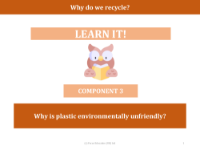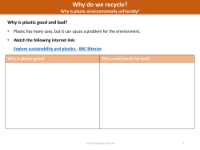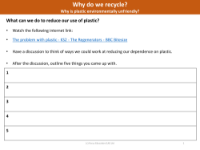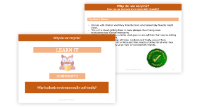Why is plastic environmentally unfriendly? - Teacher's notes
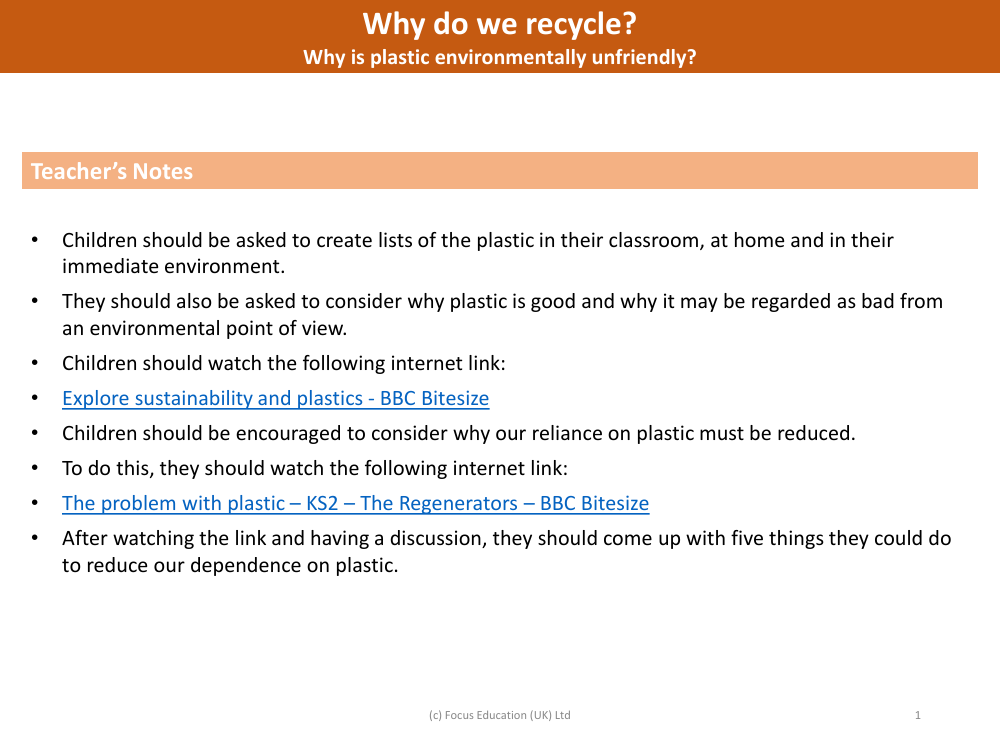
Geography Resource Description
Plastic is a material that is both incredibly useful and potentially harmful to the environment, a dichotomy that is important for children to explore and understand. In educational settings, teachers may ask students to create lists of plastic items found in their classrooms, homes, and surrounding areas to raise awareness of how prevalent plastic is in our daily lives. They are encouraged to consider the advantages of plastic, such as its durability and versatility, as well as the environmental drawbacks. To gain a deeper understanding of these issues, students might engage with resources like the BBC Bitesize website, which offers insights into sustainability and the challenges posed by plastic.
After exploring these topics, students are prompted to reflect on why reducing our reliance on plastic is crucial. Through discussions and educational resources, such as the 'The problem with plastic' segment from BBC Bitesize's The Regenerators series, they learn about the negative impact of plastic on the environment. The non-biodegradable nature of plastic makes it a persistent pollutant, often ending up in oceans and forming vast garbage patches that harm marine life and ecosystems. As part of their learning, students are tasked with brainstorming five practical measures they could take to lessen our dependence on plastic and contribute to a more sustainable future.
